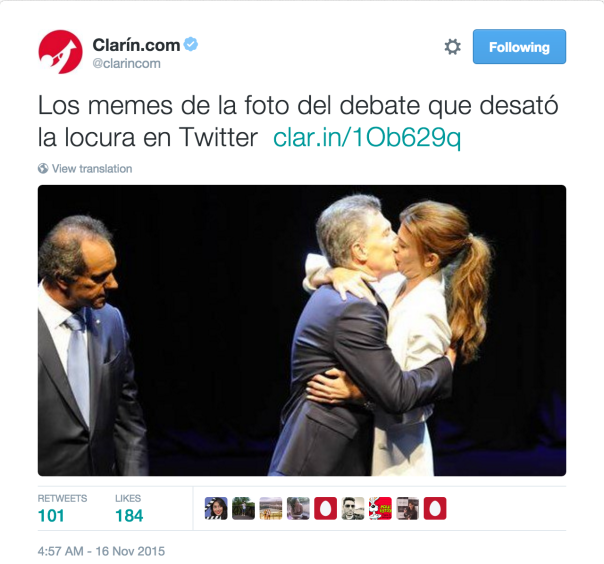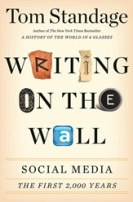A presidential debate is a big event in a country, especially when it is the country’s first. With social media growing daily and people being eager to participate, twitter becomes everyone’s best friend.
The past Sunday on the 15th of November, #ArgentinaDebate was a worldwide trend topic the whole day long. The reason for this hashtag was because Argentina was holding the first presidential live debate on TV between the two remaining candidates. With this situation being a new phenomenon and social media being a huge part of politics today, everyone was anticipating and commenting on twitter.
Before the debate started, candidates Scioli and Macri asked their followers to support them by using hashtags with their names in favor of their potencial victory:
But it was during the debate that things got interesting. Second by second, everyone was alert and answering through the media. Reaching 100 million mentions, Infobae showed how many times those hashtags were used all over the country throughout the day.
Without the time limits that the debate gave the candidates, people in their parties were able to tweet along them. They still had a limited space of 140 characters but that did not stop them. Their official twitters highlighted the best phrases that were being said during the debate.
Tenemos que apoyar, reivindicar, pagar bien a los docentes. Hay que devolverles el prestigio que merecen. #MacriPresidente #ArgentinaDebate
— Mauricio Macri (@mauriciomacri) November 16, 2015
(We have to support, claim, pay teachers well. We have to give them back the prestige they deserve. #MacriPresident @ArgentinaDebate)
Yo tengo la responsabilidad moral de defender a mis compañeros trabajadores* #ArgentinaDebate
— Daniel Scioli (@danielscioli) November 16, 2015
(I have the moral responsibility of defending my worker companions #ArgentinaDebate)
The most important newspapers of the country were not left outside of the conversation. They were constantly updating with quotes and asking followers about who they thought was winning or standing out in the debate, like shown in some examples:
However, it was not all about the political serious side. The newspapers were also interested in showing the more mundane part, just like taking into account what celebrities were saying about the debate, on twitter as well:

Or commenting on what twitter users were doing for fun during this tense moments, such as when candidate Macri kissed his wife and candidate Scioli happened to be watching:

This was one of the memes that the regular twitter users started picking up and giving the debate a less serious note. However, there still were constant angry and constructive comments from the Argentinian population as well as some outside watchers.
In the end, Twitter is a tool that helps everyone participate and keep in touch with what is going on. Even the most mundane comments added up to the popularity of the debate and proved one more time how important the public image is for politics.
No one has the real answer of who won the debate, but what was is important is that everyone felt like they took part in this decision of the future of the country.
References:
- La Nación (Argentinian newspaper) www.lanacion.com.ar and https://twitter.com/LANACION
- Clarín (Argentinian newspaper) http://www.clarin.com/ and https://twitter.com/clarincom
- Mauricio Macri’s Official Twitter https://twitter.com/mauriciomacri
- Daniel Scioli’s Official Twitter https://twitter.com/danielscioli
- “El minuto a minuto de las elecciones en twitter”- October 26th 2015 – by Infobae.com http://www.infobae.com/2015/10/26/1765123-el-minuto-minuto-las-elecciones-twitter










